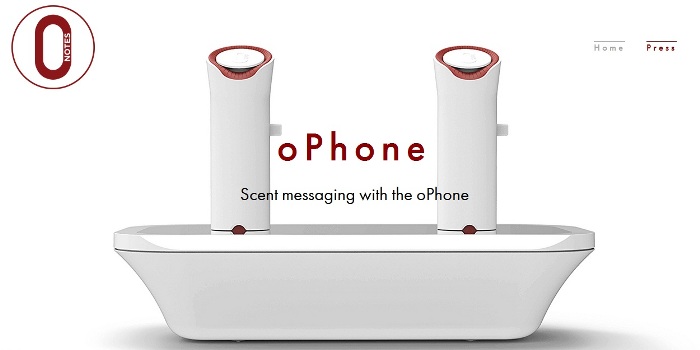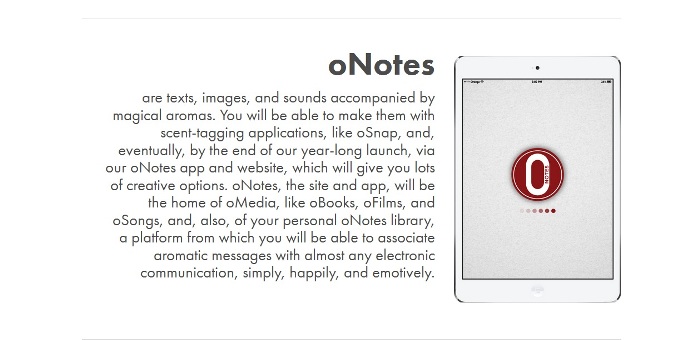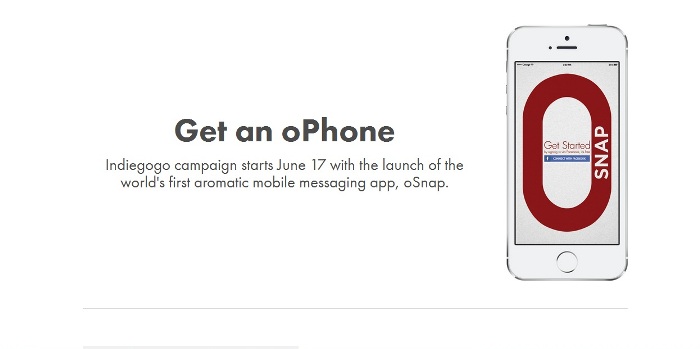The World’s First Scent Message: Scent Sent as oNotes Decoded by oPhones
From snail mail to email — soon we could be sending “smell mail” as one Harvard Professor is set to send the world’s first “scent message.” Will we see “message scent” as Professor David Edwards, also the CEO of Vapor Communications, sends the world’s first ever “scent message” through an iPhone? Professor Edwards will be hitting the “Send” button on his iPhone on Tuesday morning, the 17th of June from the American Museum of Natural History at Manhattan.
oNote – The Message
Referred to as an oNote, the message that will be sent by Professor Edwards will be an email that bears a photo tagged with a smell that supposedly represents New York. He will be sending the oNote to Christophe Laudamiel, a fragrance chemist at Le Laboratoire in Paris. Professor Edwards’ oNote is slated to become the first TransAtlantic scent message to be sent.
oSnap – The App for Producing oNotes
The message will be created using an app called oSnap, which is expected to become available on the Apple App Store soon. This app is different from the oSnap selfie camera app that is already on the App Store.
It has to be noted that oSnap does not require special gadgets or accessories to sniff the smell of the scene or object being snapped. The snap can be simply installed on an iPhone and used to take photos. The scents are added using an aroma vocabulary (i.e. scent tags using the app’s vocabulary). oSnap has 32 unique scents that can be combined to come up with around 300,000 scent variations. All of these mean that the kind of scent that will be sent will depend on the judgment of the person taking the oNote. The person will decide on what scent tags to add.
At the moment, the oSnap aroma vocabulary will focus on foodie terminologies but Edwards said that it will be expanded to be more useful for business applications.
oPhone – The Machine for Decoding oNote Scents
Of course, to translate the aroma vocabulary, there has to be some hardware involved. This is where the oPhone machine comes in. The oPhone is an invention of Professor David Edwards that comes with the ability to generate scents according to the scent tags attached to an oNote. The device looks like a gaming joystick from the 80’s-90’s. Yes, despite the name, it remotely looks like a phone. It has two cylindrical protrusions through which the scents are released. A user only needs to bring his or her nose close to either cylindrical protrusion to smell the scent produced.
Just like a printer, the oPhone needs certain chemicals or substances to produce the intended scent. It cannot magically produce aroma or odor using electricity alone.
For those interested in this technology, it is expected to be available in early 2015 for $149. Edwards and his group have already started a crowdsourcing campaign for their company, Vapor Communications, so they can jumpstart the mass production of the oPhone.
The Ideal Setup
For the concept of “scent messaging” to take off, it will be necessary to have oPhones on both sides, with both equipped with smell sniffers so textual scent tagging will no longer be necessary. The scent sending Professor Edwards will be demonstrating is obviously impractical and very remotely ideal. The thought that scents will be produced on the oPhone based on the words typed by the person sending an oNote is simply eyebrow-raising. What’s the use of reproducing the smell if the tags used by the oNote sender are incorrect? How will this setup work if the person sending the oNote is unreliable when it comes to judging smells?
Applications
Although the highlight of introducing the “scent message” concept to the public is the demonstration on sending a scent message using an iPhone, oPhone is not really envisioned to become a personal “scent messaging” device. As of the moment, it is mainly intended for business applications, to help companies such as bakeries, perfumeries, coffee brewers, or winemakers in communicating smells electronically.
The ability to communicate smells is definitely an excellent technology. What Professor Edwards and his colleagues have developed is something that could be useful in creating more immersive experiences. It may not be an essential technology but it’s something worth having. If everything goes well with the oNote demonstration, Professor Edwards is said to be planning to publish an oBook, a book that includes a scent track to allow readers to share the olfactory experiences of the hero in the book.


